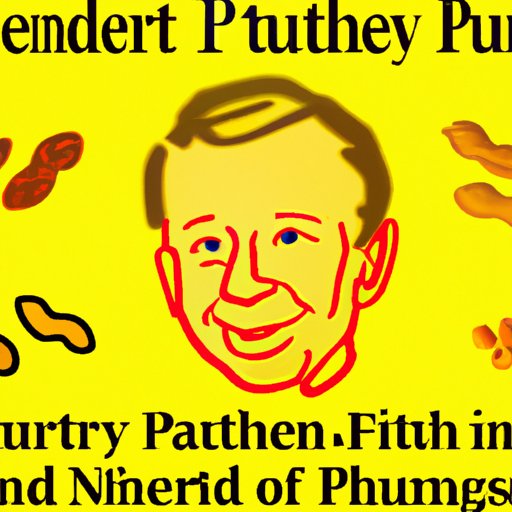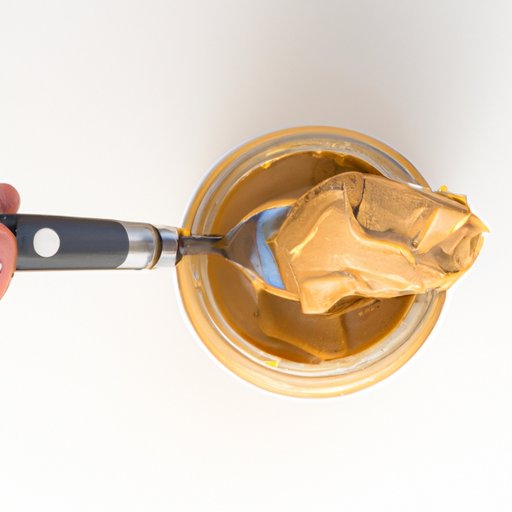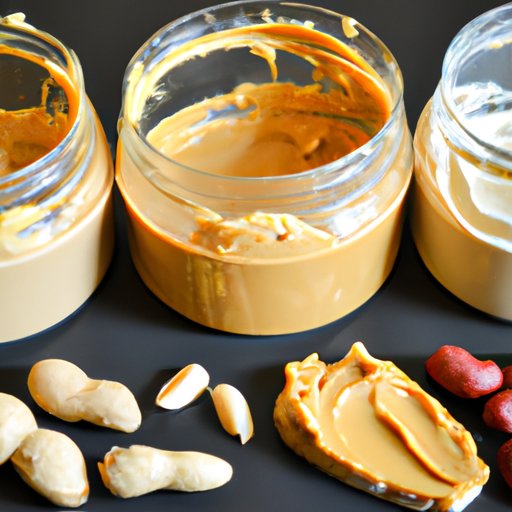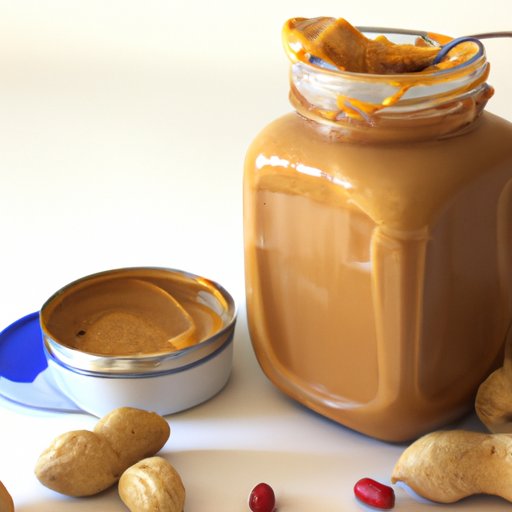Introduction
Peanut butter is a popular spread that is enjoyed by people all around the world. It is made from ground peanuts and often contains additional ingredients such as salt, sugar, and oil. The invention of peanut butter has been credited to Canadian Marcellus Gilmore Edson in the year 1884. In the following article, we will explore the history of peanut butter, its inventor, the timeline of its invention, and its impact on society. We will also examine the different types of peanut butter available today, analyze their nutritional benefits, and look at some classic and modern peanut butter recipes.

Biography of the Inventor of Peanut Butter
Marcellus Gilmore Edson was born in Montreal, Canada in 1849. He was an inventor and pharmacist who patented a process for milling roasted peanuts into a “nut-butter” paste in 1884. His patent described a process of milling roasted peanuts between two heated surfaces until the peanuts reached a “fluid or semi-fluid state.” Edson believed that his product could be used as an alternative to butter and marketed it as such. However, it wasn’t until the early 1900s that peanut butter started to gain traction as a popular snack food.
Historical Timeline of the Invention of Peanut Butter
The invention of peanut butter has been dated back to 1884 when Marcellus Gilmore Edson patented his process for milling roasted peanuts into a paste. However, it wasn’t until the early 1900s that peanut butter started to gain popularity as a snack food. In 1903, Dr. John Harvey Kellogg (of cereal fame) applied for a patent for a “Process of Preparing Nut Meal” which was essentially a method for making peanut butter. In 1922, Joseph Rosefield invented a process for adding hydrogenated vegetable oil to peanut butter which allowed it to stay fresh for longer periods of time. This process is still used today in most commercial brands of peanut butter.

Examining the Impact of Peanut Butter on Society
Peanut butter has had a profound impact on society and culture. According to a study published in the journal Appetite, peanut butter is the most popular nut butter in the United States. It is estimated that Americans consume more than 1.5 billion pounds of peanut butter each year. Peanut butter is not only a popular snack, but it is also a key ingredient in many classic American dishes such as peanut butter and jelly sandwiches, peanut butter cookies, and peanut butter ice cream. Peanut butter has also been shown to have a positive impact on our diets. Studies have found that consuming peanut butter can help reduce the risk of type 2 diabetes, cardiovascular disease, and obesity.
Exploring the Development of Peanut Butter Over Time
Over the years, the production of peanut butter has evolved significantly. Today, there are many different types of peanut butter available on the market. These include natural peanut butter, processed peanut butter, and organic peanut butter. Natural peanut butter is made from just one ingredient – peanuts. Processed peanut butter typically contains added sugar, salt, and oil. Organic peanut butter is made with organic, non-GMO ingredients.

Analyzing the Different Types of Peanut Butter
When it comes to the nutritional benefits of different types of peanut butter, natural peanut butter tends to be the healthiest option. It is low in sodium and saturated fat and is a good source of protein, fiber, and healthy fats. Processed peanut butter, on the other hand, is higher in sodium and saturated fat and may contain additives such as preservatives, stabilizers, and emulsifiers. Organic peanut butter is typically the best option if you are looking for a natural, additive-free peanut butter.
Peanut Butter Recipes Through the Ages
Peanut butter has been used in a variety of recipes throughout the ages. Traditional recipes include peanut butter and jelly sandwiches, peanut butter cookies, and peanut butter fudge. More modern takes on these classic recipes include peanut butter brownies, peanut butter banana smoothies, and peanut butter and honey toast. Peanut butter can also be used in savory dishes such as Thai peanut noodles, peanut sauce stir fry, and peanut butter hummus.
Conclusion
In conclusion, peanut butter is a popular spread that has been enjoyed by people all around the world for centuries. It was invented by Canadian Marcellus Gilmore Edson in 1884 and has since become a staple in American culture and diets. Today, there are many different types of peanut butter available on the market, each with their own unique nutritional benefits. Peanut butter can also be used in a variety of recipes, both traditional and modern. From peanut butter and jelly sandwiches to peanut butter brownies, this versatile spread is sure to satisfy any craving.
(Note: Is this article not meeting your expectations? Do you have knowledge or insights to share? Unlock new opportunities and expand your reach by joining our authors team. Click Registration to join us and share your expertise with our readers.)
